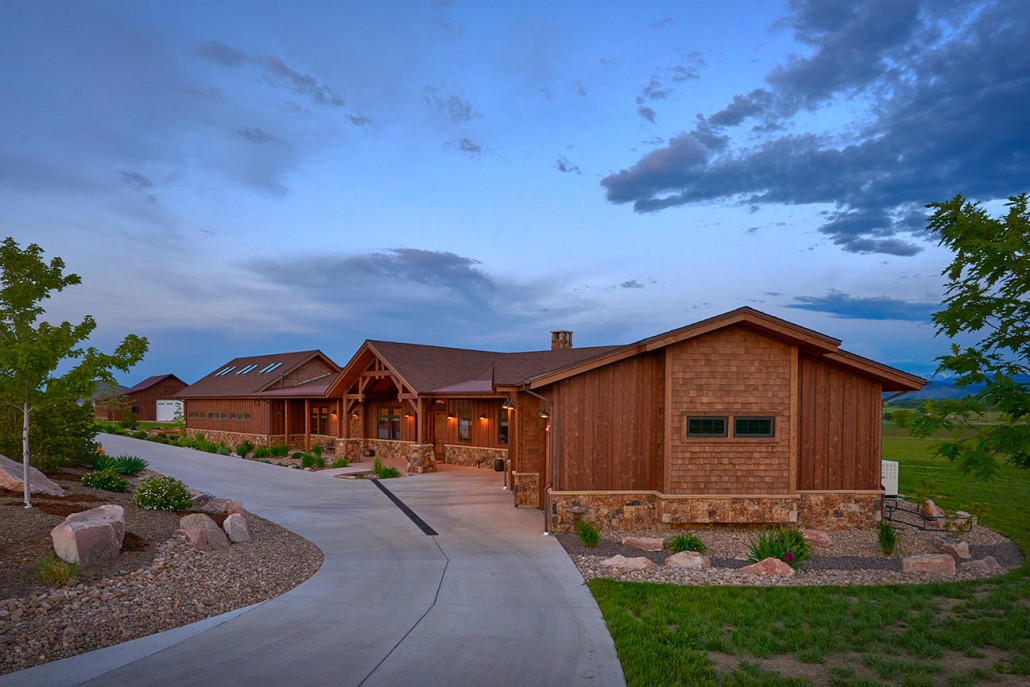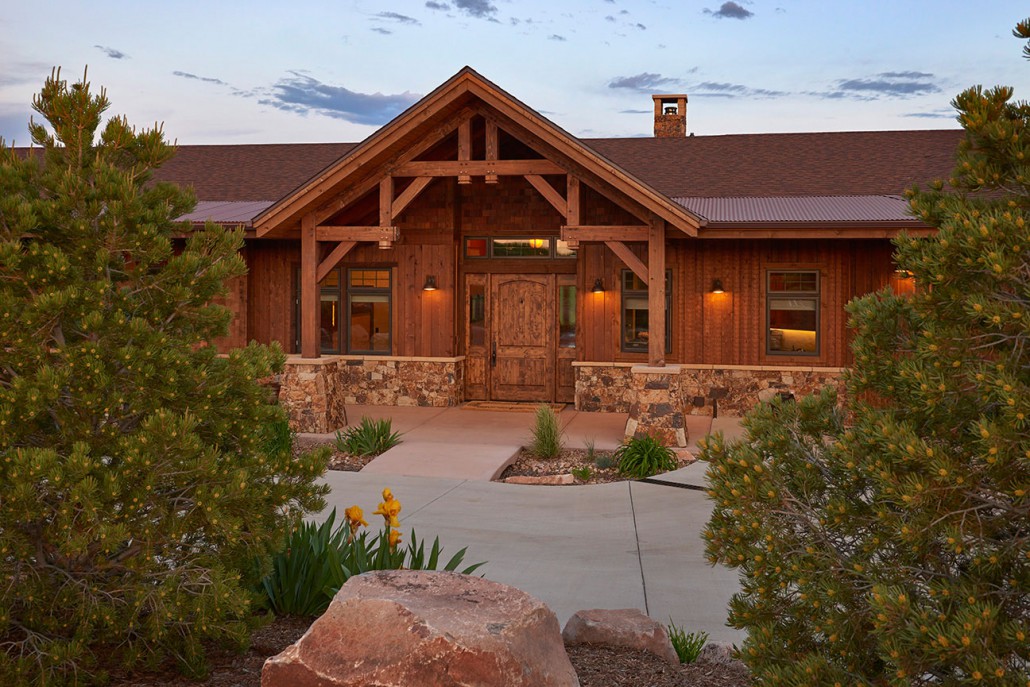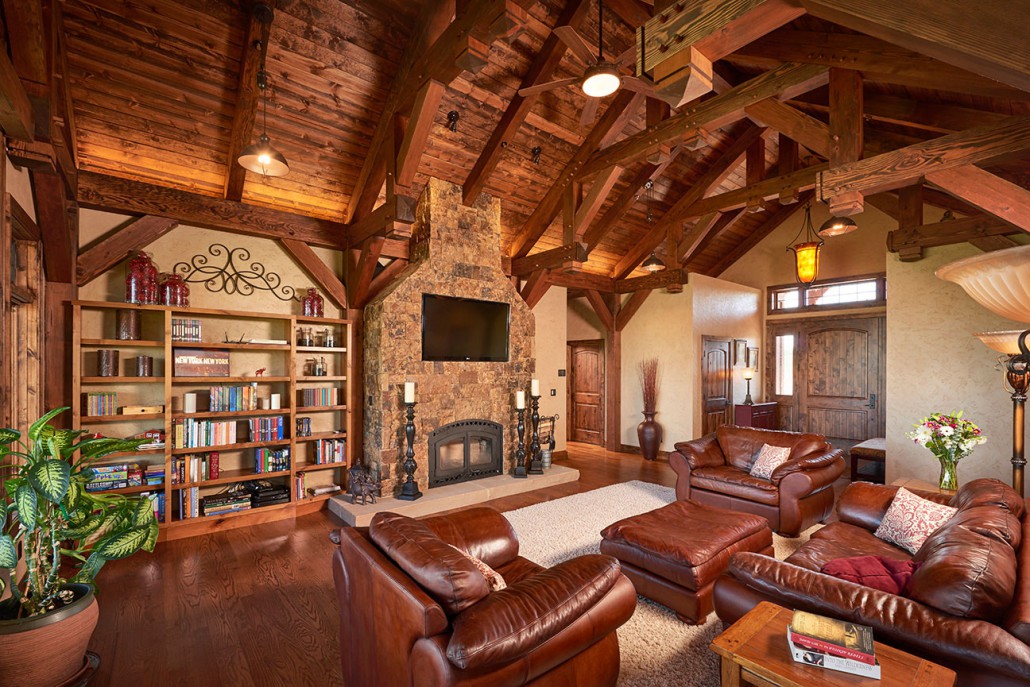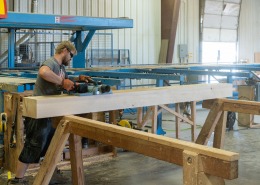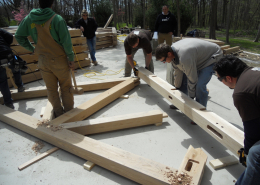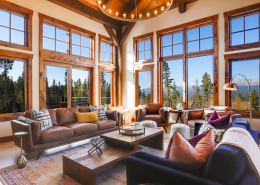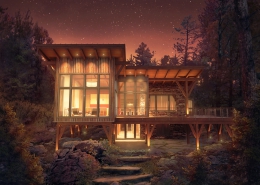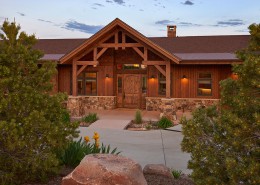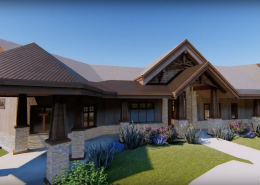Timber Frame Maintenance Made Simple
Timber Frame Homes are Built to Last
Timber frame construction has a surprisingly long lifespan. In parts of Europe, there are timber frame structures still standing after more than a thousand years and in the New England countryside there are century old barns still in prime condition. With modern preservation techniques and more effective wood finishes available now, timber frame structures built today can survive even longer, unaffected by the ravages of time.
The first thing you can do to ensure your timbers stand the test of time is selecting quality material for your project. The goal for choosing the best material is to minimize the possibility of shrinking and reduce the amount of checking so the joinery remains tight and there is no danger of instability. Timbers will naturally shrink, move, and check as they dry so it’s important to use material that has been properly dried prior to fabrication. Even the most carefully fitted joint can shift or crack if built of “green” lumber.
Aside from making sure your timbers are properly dried, choosing a wood species favorable to your home and its location is also important. Cedars are best suited for outdoor elements as they are very resistance to moisture, decay and insects, however, Douglas fir, when properly treated, does well in any environment as well. Douglas fir is known for its tough fiber and dense grain structure, making it a superior choice for structural purposes.
The way in which your timbers are finished also play a big role in the longevity of your home. Luckily, the upkeep and maintenance is far less than what you might expect. Here are some simple maintenance know hows to keep your timbers in tip, top, shape.
Exterior
Your home’s exterior is the most vulnerable part of the house. It will be besieged day after day by the elements, apart from pests seeking to burrow into the wood. To protect your timber frame home from decay and weathering, some specialized treatment is required.
Painting is an option, but we would recommend against it. One of the biggest reasons for choosing a timber frame for your home in the first place is the distinctive look of wood. Stain brings out the natural tint and grain of the wood while preserving it for posterity. Stain penetrates the wood fibers helping to seal against moisture, and unlike paint which is a topical coating, it won’t chip or crack over time.
How often exterior timbers need stain reapplied greatly depends on the stain being used (each manufacturer will have a recommendation on the can), climate and sun exposure. A good rule of thumb though is about every three to seven years. You can go over existing stain as long as a topcoat or sealant hasn’t been applied which is not recommended for timbers. When staining, make sure to choose a chemical agent that includes fungicides as well as UV protection. These additives ensure that the wood is protected from insects as well as the deteriorating effects of sunlight, which is essential for exterior timbers. Properly preparing, cleaning, and drying the surface before applying a stain will yield the best results for it to last. If the timber elements aren’t too great in size, wiping the stain on with a clean rag is the easiest way to control the application and generally you won’t even need that much stain to revive already stained timbers.
Interior
If you possess any type of heavy wooden furniture, you are already well aware of the benefits of periodically oiling. This applies to the interiors of your timber frame house as well. However, keep in mind that the timber that makes up your home requires a different type of treatment than wood flooring or furniture. The fibers that compose the timber frame need to ‘breathe’ to adjust the changes in the moisture content of the wood as it ages. Some staining and oiling agents like lacquers and urethanes can prevent the wood from breathing, which can be detrimental in the long run.
While the interiors of your home are not exposed to the elements, they can lose their sheen over time. Generally, a transparent layer of tung oil will do the trick but only needs to be reapplied for aesthetic reasons. Tung oil has a deep, almost wet look, lending a glossy, rich finish that brings out the wood’s natural beauty.
Conclusion
Maintaining a timber frame home requires far less effort (and expense) than you might imagine. With some proper foresight while constructing your house, use of quality materials, and timely application of protective oils, your inspiring timber house is likely to survive for generations.
See what’s new!
Stay up to date with our latest projects, upcoming events, and news by subscribing to the Colorado Timberframe quarterly newsletter.

